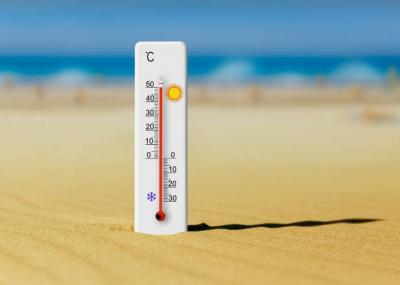Many Arab countries are experiencing a noticeable rise in temperatures during the current period, and meteorological experts advise citizens to avoid direct sunlight and take necessary precautions. The Aqaba region in southern Jordan recorded a maximum temperature of 47.8 degrees Celsius according to weather stations at 4:00 PM yesterday, Friday, according to "Arab Weather." This temperature places it among the highest recorded in Jordan.
Meteorologists in Jordan, upon reviewing climate records for June in Aqaba, believe that the maximum temperature recorded yesterday is the highest ever for the month (June) and one of the highest temperatures recorded in June overall.
In Saudi Arabia, coinciding with the Day of Arafah, the Ministry of Health warned pilgrims about the dangers of exposure to high surface temperatures in the holy sites, which can reach elevated levels. The Ministry emphasized that "prolonged exposure to sunlight poses a significant health risk," noting that this year's Hajj season (1445 AH) coincides with rising temperatures in Mecca, which is one of the biggest challenges faced by pilgrims.
The National Center of Meteorology in Saudi Arabia noted on its website today, Saturday, that "the current temperature in Mecca is 38 degrees Celsius, with wind directions from the southwest to west at a speed of 10 - 25 km/h," while temperatures in Mina, Arafat, and Muzdalifah also reached 38 degrees Celsius.
The National Center of Meteorology also predicts that the maximum temperature in Mecca will reach 46 degrees Celsius, with a minimum of 32 degrees Celsius. In Mina, the maximum will reach 46 degrees Celsius, with a minimum of 32 degrees Celsius; in Arafat, the maximum will be 47 degrees Celsius, with a minimum of 32 degrees Celsius; and in Muzdalifah, the maximum will be 46 degrees Celsius, with a minimum of 31 degrees Celsius, according to "Okaz" newspaper.
Meteorologists at "Arab Weather" indicated that Kuwait will be affected by a heatwave during the Eid al-Adha holiday, causing a noticeable rise in temperatures across various regions. From the morning of the first day of Eid until the end of the holiday, severe heat will dominate, becoming scorching in desert and inland areas, with temperatures ranging between 48 to 50 degrees Celsius, especially during the last days of the Eid holiday, particularly in the Al-Jahra area and its surroundings.
In contrast, coastal areas in Kuwait are expected to avoid the scorching temperatures of 50 degrees Celsius on the first day of Eid, with temperatures in those areas, including Kuwait City, ranging from 40 to 44 degrees Celsius. However, they will be affected by humid air currents that increase the feeling of discomfort and heat, meaning that the temperatures felt by the human body will exceed those recorded on thermometers, according to "Arab Weather."




